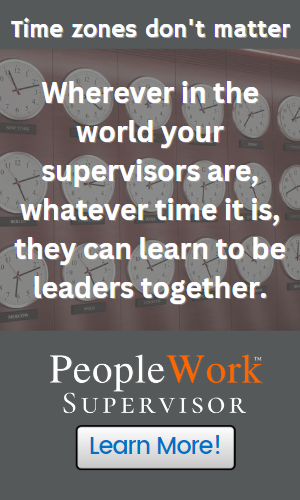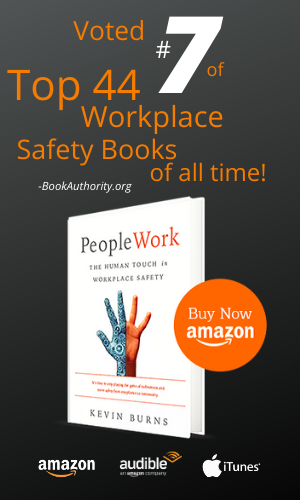Focus on Safety Benefits, Not Numbers
Numbers don't sell anything.
The furnace in our house is 96.1% efficient. The water softener regenerates every 1000 gallons. The home office workspace is 350 sq.ft. The sound-reducing acoustical-drywall treatments have reduced ambient noise from 47db to 26db. Converting to LED bulbs throughout the house reduced energy consumption by 25% in the first month. Want to buy a house?

Numbers don’t sell houses. Mileage numbers don’t sell cars. You don’t lead with numbers to sell anything. In fact, in a Real Estate listing, you will find the numbers in the footnotes. Vehicle mileage and fuel economy numbers are found on the back page of the brochure.
Truthfully, people buy emotionally and justify their decision with logic and facts. People buy-in to things and ideas that will improve their lives in some way (safety included). They use numbers to support their decision.
Let's use the example of Real Estate. A compelling Real Estate listing does not lead with numbers. It leads with a quality-of-life benefit statement - something that evokes an image or an emotion.
- Skip the commute and work from home in one of two offices.
- Enjoy expansive mountain views on three floors.
- Relax with a glass of wine watching the most spectacular sunsets.
- Take advantage of the peace and tranquility of near-country living.
When you lead off with benefits to the buyer, you create a more compelling statement. These are the kinds of images people want to envision when they are looking for a place to settle their family. The best statements use words that evoke a vision, a feeling, an emotion.
Safety numbers don't motivate.
When it comes to safety, here is what we talk about.
- Our TRIF rate has gone from 0.79 in Q1 to 0.64 in Q3.
- Our man-hours without LTI is currently 400,000.
- We had 17 recordables last quarter including 11 first-aids/medicals.
When meeting with potential clients, you may end up discussing TRIF/LTI rates at some point during a meeting, but you certainly don't lead with it. Numbers are supposed to be used as a supplement; proof of the benefits of working with you.
Besides, smart companies already know you can simply use heavy-handedness to enforce safety and lower the TRIF rate, but it would be an awful place to work.
What if, instead of numbers, this what was said.
"Plain and simple, we look after our people.”
“Most of our employees have been with us well over 10 years with almost one-third with us nearly 30 years.”
“We don't turn over employees - they retire with us.”
These are the kinds of benefit-driven statements that are more indicative of the kind of company and culture you represent. Statements like these are more appealing to both clients and employees (present and future) than any discussion of numbers. It speaks to the caring of an organization more than any discussion of performance numbers. It speaks to the quality of an organization and the culture of its people more than any discussion of "man-hours without lost-time."
What are the things that employees respond to?
Numbers do not give employees a sense of pride, or the motivation to get out of bed and look forward to another day. Numbers may be important for tracking purposes, but they are not what employees want to hear. They want to hear the benefits of following the plan, the vision. Your communications and coaching of frontline employees needs to focus on the benefits of safety.
(NOTE: "Not getting hurt" is not a benefit. That's what is supposed to happen. That's the minimum allowed by law. Not getting hurt is not a benefit because if they're not hurt now, they don't have to do anything different to get the same result. Avoiding a negative is never a positive benefit.)
So, what are the benefits of your safety program? Turn them into words and feelings. Summarize what it means to your people and customers. In fact, get rid of any PowerPoint slides that reference numbers when dealing with frontline employees.
Numbers do not make employees feel valued. Supervisors do.
Numbers do not improve employee motivation. Supervisors do.
Numbers do not encourage better team safety. Supervisors do.
Stop talking about numbers and start talking about what gets you those numbers: effective supervisory communication and coaching skills.
Safety is the result of effective coaching and communication.
Safety discussions should not ever center around numbers. In fact, it is better to hand out a printed supplement with the weekly numbers for those who are curious. Instead, use your discussions and conversations to rally your people around a common cause of looking out for each other, doing their best work, and taking pride in the culture that you have created together.
 The Safety Communications & Coaching for Supervisors Program was created to help companies accomplish better dialog and better relationships between supervisors and frontline employees.
The Safety Communications & Coaching for Supervisors Program was created to help companies accomplish better dialog and better relationships between supervisors and frontline employees.
There is no greater influence on an employee than the communication and coaching skills of the employee's immediate supervisor.
Employees are depending on their immediate supervisor to have the skills that will help the employee improve their performance.
Employees do what supervisors do. Are your supervisors demonstrating, by example, the behaviors and communications that you would like your employees to demonstrate?
Are your supervisors communicating the benefits of employee participation in the safety program? If you would like to find out how your supervisors could improve their effectiveness in communications and coaching, click the button below.
Kevin Burns is the President/CEO of KevBurns Learning. Kevin works with smart, caring companies to energize safety culture, build teamwork, and get employee buy-in.
In 2020, BookAuthority.org named PeopleWork #7 of The Top 44 Workplace Safety Books of All Time. Buy yourself a copy of PeopleWork: The Human Touch in Workplace Safety and give another as a gift to a colleague.
Subscribe to Kevin’s Blog.





